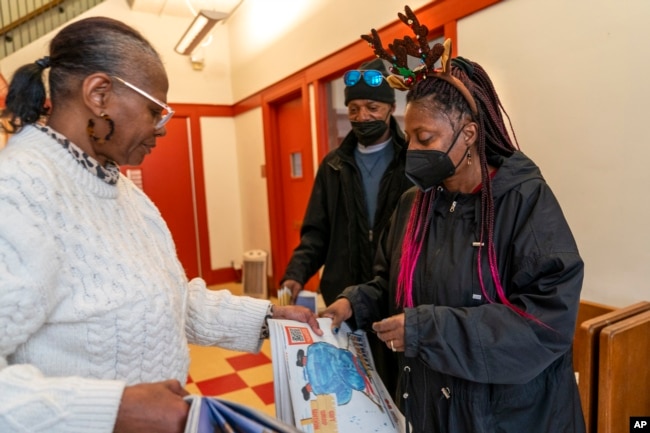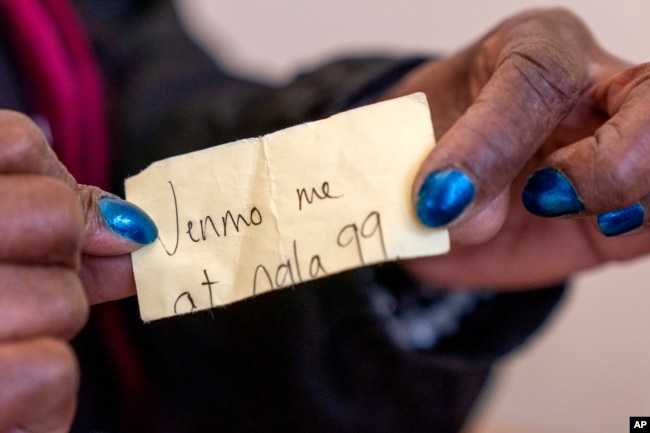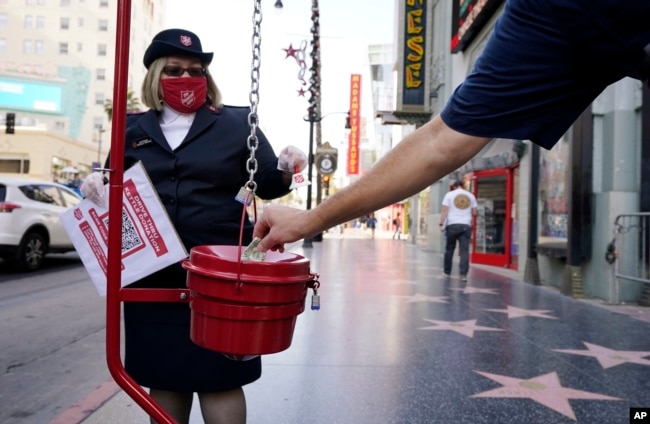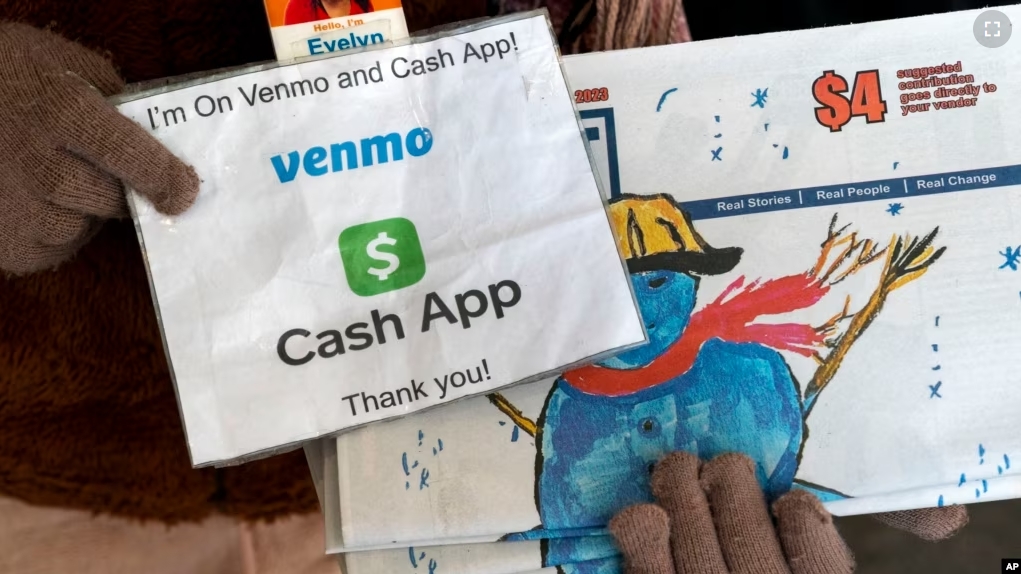Do you still leave home with money in your pocket?
Now that many stores have gone “cashless” and most people do not have money in their pocket, those who once depended on handouts from strangers often end the day empty-handed.
Many people without homes or jobs say they are not able to get much money from strangers anymore.
John Littlejohn is 62 years old and lives in Washington, D.C. He said he has been homeless for 13 years. In recent years, he said, people would tell him they left home without any money.
“I would be out here for six or seven hours and wouldn’t get more than $12 to $15,” he said.

People can use apps on their mobile phones to pay for most things, so they do not leave home with bills or coins. For a while, those without homes and charities that depended on spare change suffered.
But they are using technology, too.
Littlejohn sells copies of a newspaper called Street Sense. It is published by a nonprofit organization that says it helps homeless people. Now people who want to buy the newspaper can use an app. The money goes directly to the seller. Littlejohn is able to pay for an apartment with the money he gets from selling Street Sense and also other jobs he does.
Some people who stand outside public places such as subway stations and ask for money are called panhandlers. Sylvester Harris is one of them. He talked to a reporter near a subway station close to a large sports center in Washington, D.C. He said people often look like they want to give him money, but they do not have coins or bills.
“Everybody just has (credit cards) or their phones now,” he said.

Homeless people often do not have bank accounts, credit cards or real identification that would permit them to use a mobile phone app to get money.
The cashless society also used to be a problem for a charity organization called the Salvation Army. The group is known for sending people to stand in busy places with a big red cooking pot, known as a kettle. People walk past the kettle and drop a dollar or a few coins inside.
However, as more people started using their phones and credit cards to make payments, the Salvation Army was receiving less money.
Now, the organization permits people to make donations by tapping their phones on the red kettle.
Michelle Wolf is with the Salvation Army in Washington. She said the technology is only available in a few places around the city, but it already has brought in more money.

Most people give $5 and often people give $20, she said.
The head of Street Sense said he started to see a problem about 10 years ago. Those who sold his newspapers said people did not have money to buy them.
“We were losing sales,” said Brian Canmore. “Times were changing, and we had to change with them.”
He heard that a similar newspaper in Vancouver, Canada created a payment app. Now the newspaper in Washington uses the same technology.
Thomas Ratliff also works for Street Sense. He is in charge of the 100 sellers around Washington. He said a big problem started in 2020 when many workers stayed home because of the COVID-19 pandemic.
He said people who came to Washington for work were the main buyers of the newspaper. Many of those people are still not coming into the city. Now the sellers take the subway to busier areas outside of Washington, D.C. in Maryland and Virginia to sell the papers.
Ratliff noted that some payment apps that do not require a bank account — Venmo and Cash App – still require a steady mobile phone number. But the sellers often change their number and then they have trouble getting paid.
There is a way for homeless people without jobs to get money in the cashless society. They can use the Samaritan app. It permits people to give money to someone just by scanning a special code – a QR code – with their phone. People who scan the code can read a story about the person and donate money that is meant to be used for buying food or clothing.
Jon Kumar started the Samaritan app. Charities pay him to use his technology for their work. He said it is hard to walk past a person when you know their story. His app, he said, “personalizes the person in need.”
The people who use the app to ask for money must meet with a case manager to claim their money. The manager can also help the person with services, such as directing them to counseling or drug rehabilitation.
None of the apps or new technology will solve every problem for homeless people. Many people do not have the ability to sell newspapers, for example. Others are too old to work so they depend on asking people for money. Not everyone has a mobile phone.
Kumar said some people are “not a great fit” for this kind of intervention. He said some people need more support than a phone app can offer.
I’m Dan Friedell.
Dan Friedell adapted this story for Learning English based on a report by the Associated Press.
______________________________________________
Words in This Story
pocket –n. a small cloth container sewed into some clothing
app (application) –n. a computer application.
charity—n. a not-for-profit organization that aims to do some good in society
spare –adj. something that is extra
tap –v. to lightly touch
scan –v. to use a machine to take a picture to record an image of something like a document or other media
code (QR) –n. a special sign that can be scanned and which directs the scanning device to a website that provides additional information
rehabilitation –n. the process of trying to bring someone back to normal or health after an illness, drug problem or similar difficulty
